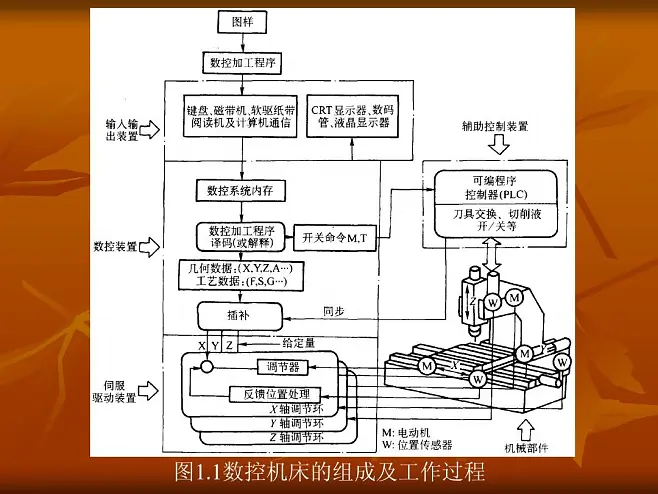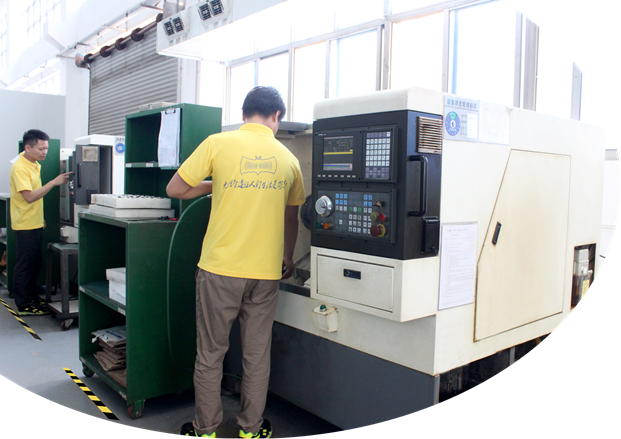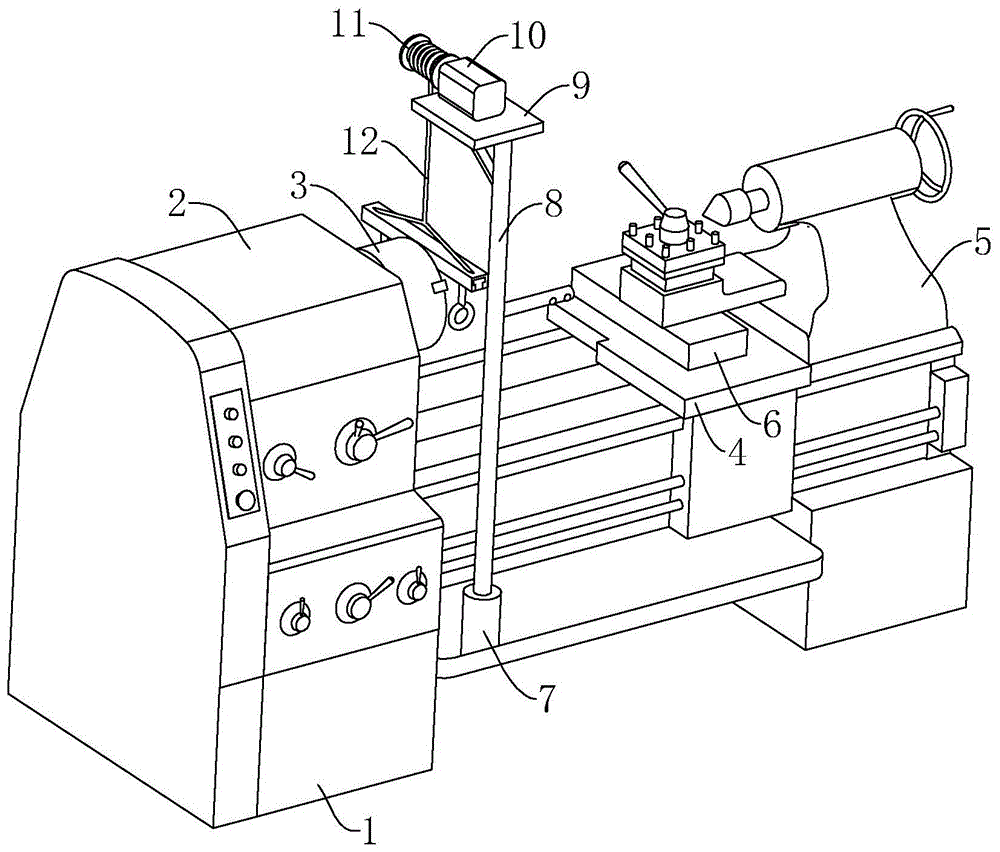Basic components of CNC lathe
CNC machine tools are the mainstream equipment with greater production volume and the most common use in modern manufacturing. They are essential equipment for precision CNC machining and have many advantages such as high processing efficiency and high precision. So do you know what components a CNC lathe is composed of?
First of all, we must understand that a CNC lathe is an automated machine tool equipped with a program control system. This control system can effectively process and decode various programs according to specified instructions, so that the machine tool can process parts correctly. Also known as CNC lathe, it is also called computer lathe in Hong Kong and the Pearl River Delta area.
CNC lathes are divided into cutting machines and center machines according to their movement modes. The overall structural composition of a CNC lathe is basically the same as that of an ordinary lathe, that is, it also has basic components such as the body, spindle, tool holder, carriage, and tailstock. However, ordinary lathes do not have CNC operation panels, display monitors, and other unique features of CNC machine tools. part.
P.S.: The cutting machine is a high-performance, high-precision, low-noise cutting-type automatic lathe. It is an automatic processing machine tool that controls the processing program through a cam. The full name of the cutting machine is a cutting-type CNC lathe, which is a precision Processing equipment can simultaneously complete complex processing such as turning, milling, drilling, boring, tapping, and engraving. Both of these are CNC lathes.
The vast majority of CNC machine tools currently on the market generally include the following four parts: machine tool body, control part, driving device and auxiliary device.

1. Main body of machine tool
The main body of the machine tool is the mechanical component of the CNC lathe, which mainly includes the bed, base, columns, beams, slides, worktable, spindle box, feed mechanism, tool holder and automatic tool changer. It is a mechanical part that automatically completes various cutting processes on CNC machine tools.
Adopt a new machine tool structure with high stiffness, high earthquake resistance and small thermal deformation. Methods such as increasing the static stiffness of the structural system, increasing damping, and adjusting the mass and natural frequency of structural parts are usually used to improve the stiffness and seismic resistance of the machine tool host.
Methods to improve the stiffness and seismic resistance of the machine tool host usually include: 1-By increasing damping; 2-Adjusting the mass of structural parts 3-Adjusting the natural frequency 4-Improving the static stiffness of the structural system; where the static stiffness (The static stiffness) is the structure under a specific The ability to resist deformation under static stimulation.

Modern CNC machine tools widely use high-performance spindle servo drives and feed servo drives to shorten the transmission chain and simplify the structure of the machine tool's mechanical transmission system.
2. Control part
The control part is the core of the CNC lathe. It generally includes a special computer, liquid crystal display, control panel and strong current control system (including machine tool printed circuit board circuit, screen display, keyboard, paper tape TAPE, magnetic tape, drive circuit, etc.) input to the control part The program instructions recorded on the information carrier are received by the program reading device, or directly manually input by the keyboard of the control part.
The "paper tape TAPE" here refers to a medium for storing programs. The program is recorded on the paper tape with a punch machine, and then the program recorded on the paper tape is input into the CNC machine tool; and with the development of storage technology, now Paper tapes are no longer used to record programs; in most cases programs are recorded using flash memory or disks. "Tape" and "disk" are components that most modern machine tools will be equipped with after the development and evolution of "paper tape".
3. Driving device
At present, the commonly used drive devices for CNC machine tools are mainly divided into four types: servo motor drive device, stepper motor drive device, DC motor drive device, and AC servo motor drive device.
1. Servo motor drive device. It has the characteristics of simple structure, high positioning accuracy, high power output and wide speed range. It is widely used in CNC machine tools with high processing quality requirements and frequent movements, especially CNC milling machines, CNC lathes, etc.;
2. Stepper motor drive device has many advantages such as high precision and stable low-speed drive. This kind of drive device realizes the position and control speed of the machine tool axis by controlling the distance and frequency of each step of the motor, thereby accurately controlling the motion state of the machine tool. Stepper motor drives are commonly used in CNC machine tools that require higher precision and lower speeds (such as printing machines and winding machines)
3. DC motor drive device. It has the advantages of simple structure and excellent speed regulation performance. The speed and torque control of the motor is usually achieved by converting DC voltage. It is suitable for CNC machine tools with large speed changes and high precision requirements, such as CNC drilling machines, CNC boring machines, etc.
4. AC servo motor drive device. This is a drive device that integrates a servo motor and a frequency converter. It has the characteristics of compact structure, fast response speed, and smooth operation. The AC servo motor drive device realizes motor speed and position control by controlling the power frequency and phase difference. It is suitable for high-precision, high-speed CNC grinders, CNC machining centers, etc.
4. Auxiliary devices
Auxiliary devices are some supporting components on CNC lathes. The tool setter (full name is tool presetter) is used to measure and/or adjust the cutting edges of various machining centers and CNC machine tools with axial boring and milling cutters during off-machine presetting. Radial and axial size measuring instruments), lubrication, hydraulic and pneumatic devices, cooling systems and chip removal devices, etc.;
CNC machine tool auxiliary devices are necessary supporting devices to ensure that the functions of CNC machine tools can be fully utilized. Commonly used devices include various auxiliary devices such as starting, hydraulic devices, drainage devices, cooling and lubrication devices, rotary tables and CNC dividing heads, protection, lighting, etc. device. A CNC machine tool is an automated machine tool equipped with a program control system, which can make the machine tool move and process parts according to a good program.
Sensors used in CNC machine tools mainly include radio and television encoders, linear gratings, proximity switches, temperature sensors, Hall sensors, current sensors, voltage sensors, pressure sensors, liquid level sensors, resolvers, induction synchronizers, speed sensors, etc. Mainly used to detect position, linear displacement and angular displacement, speed, pressure, temperature, etc.
Yixin Precision Metal & Plastic Ltd has more than 70 imported CNC machining centers, 5 CNC lathes, 3 grinders, 12 milling machines, 5 spark machines, 2 sandblasting machines, and 5 tapping machines. . The machinery and equipment are complete, and the production and processing of high-precision parts can be completed in 2 working days. Supports customized processing of large and small batches, and provides professional CNC processing services for hardware parts. Welcome to call for price consultation: +86 18938911183.

